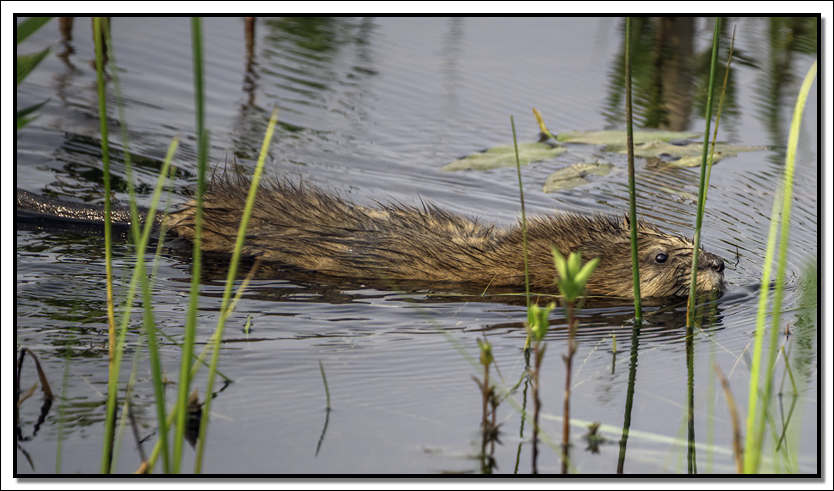Muskrat
Muskrat (Ondatra zibethicus)
The muskrat is an aquatic rodent commonly found in the wetlands and waterways of North America. The entire body, with the exception of the tail and feet, is covered with a rich, waterproof layer of fur. Their feet have minimal hair and the tail is hairless. They have small beady eyes.
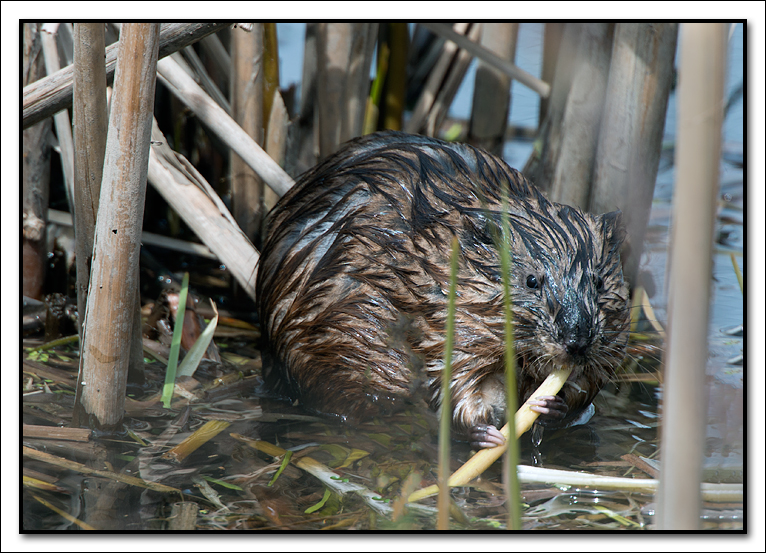
Muskrats favourite food are cattails. They also enjoy bulrushes, horsetails, or pondweeds and a variety of other plants, including sedges, wild rice, and willows.
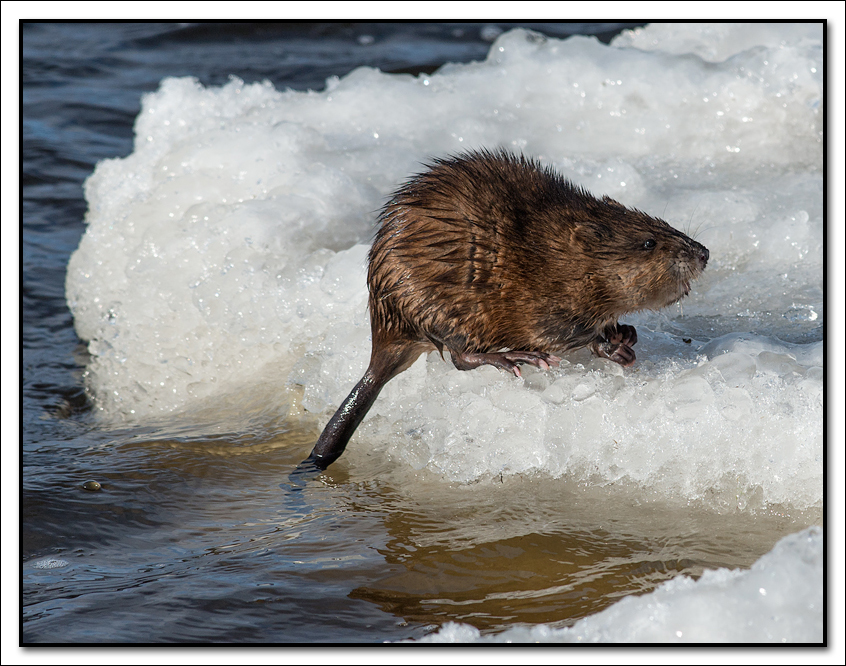
Muskrats do not hibernate and are active all year long. They typically live in freshwater marshes, marshy areas of lakes, and slow-moving streams. The water must be deep enough so that it will not freeze to the bottom during the winter, but shallow enough to permit growth of aquatic vegetation. The winter is a period of relative inactivity. The muskrat is safe from the cold and from most predators. It spends most of its time sleeping and feeding until breeding activities begin after spring break-up
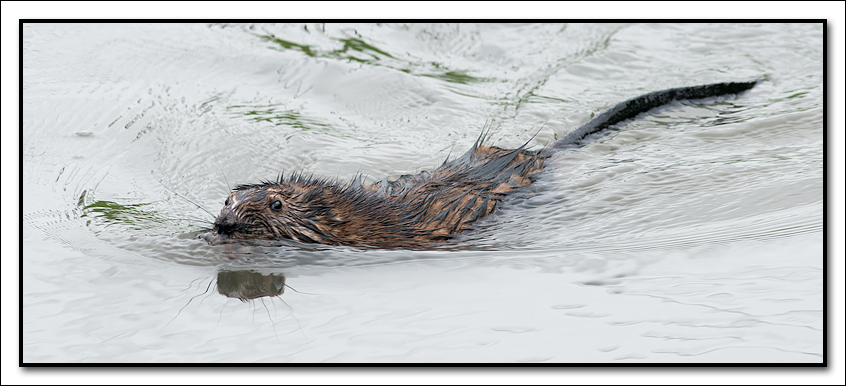
When we do get to see Muskrat, it is usually, like the picture above, when they are swimming in the water. They are capable of remaining submerged for up to 15 minutes.
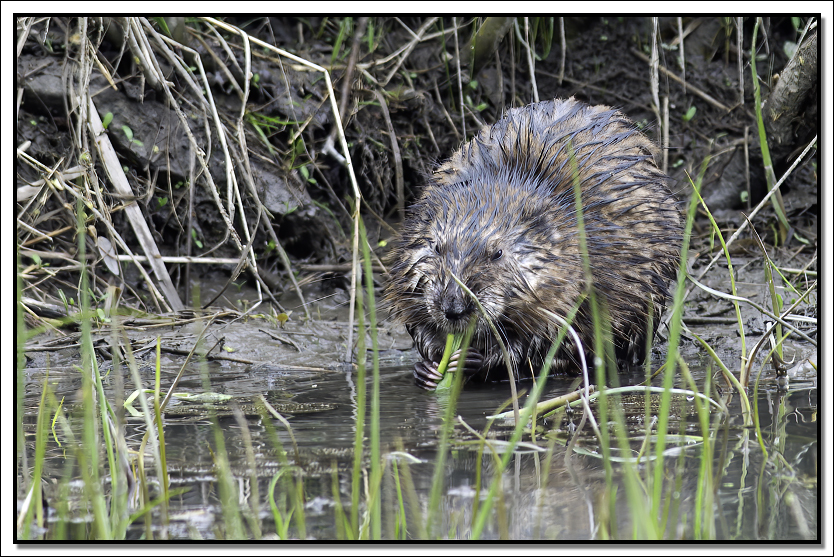
Although the muskrat builds lodges and lives in the water, it is not a close relative of the beaver. Nor is it a true rat. Instead, it is basically a like a giant field mouse that has adapted to living in the water.
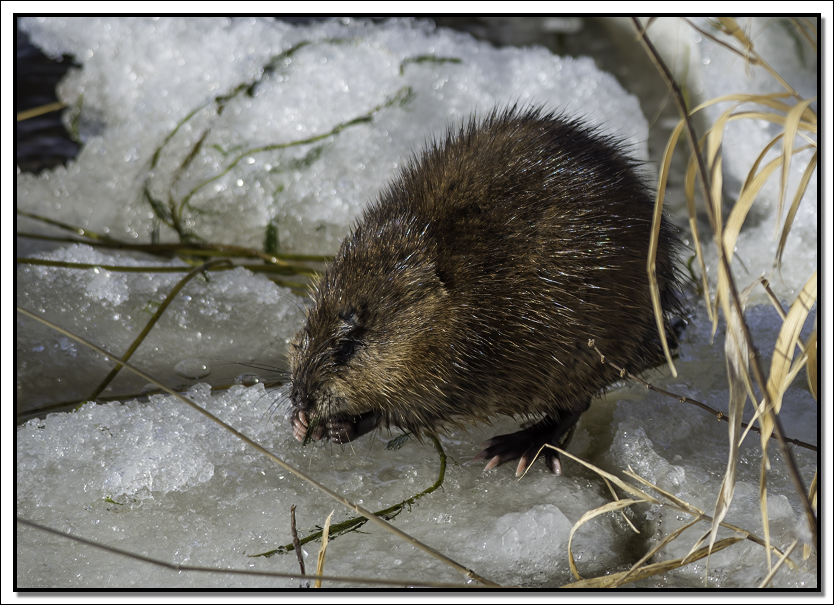
In the winter, the Muskrat feeds on submerged vegetation.
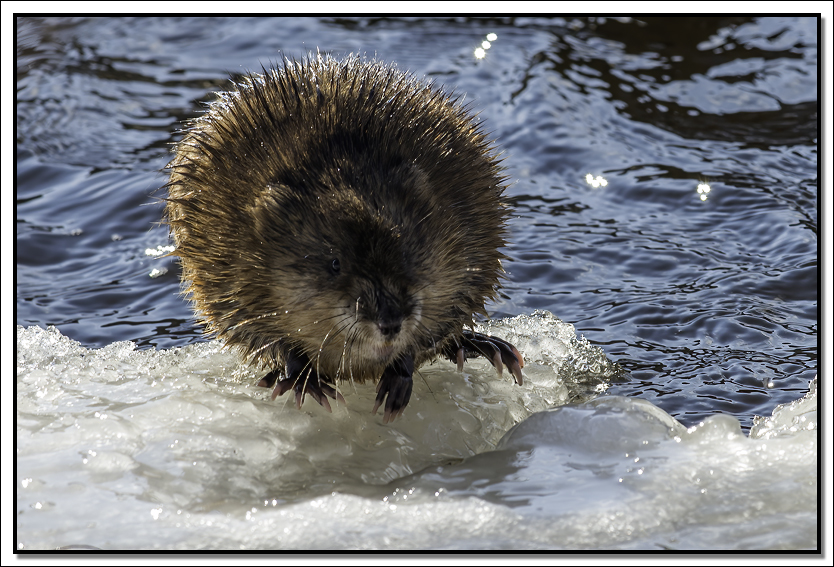
The hand-like front feet are used in building lodges, holding food, and digging burrows and channels. Although the larger hind feet are used in swimming, they are not webbed.
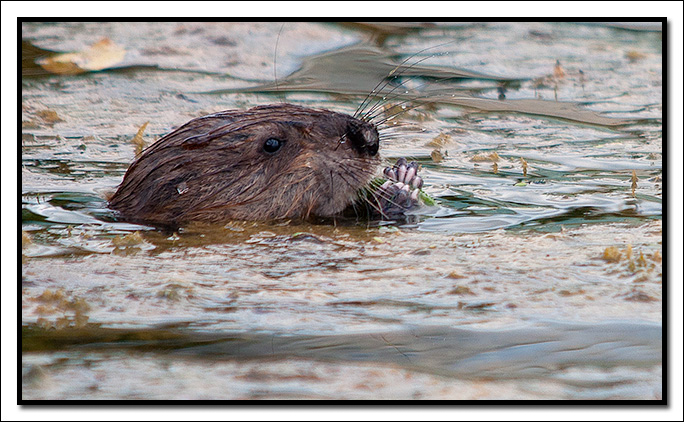
Muskrat front teeth have evolved to able them to chew underwater. They protrude in front of their cheeks and their lips and can close behind the teeth allowing them to chew with their mouth closed. They are excellent swimmers with their paddling feet and flat tail. They can even swim backwards.
